Farmers desperately hoping for rain this week
Southern Australian farmers await crucial rainfall forecast to roll in from tomorrow, with thousands of farming families’ fortunes pinned on the front to ease a two-year drought. Here’s what farmers say.
UPDATE
The Bureau of Meteorology is holding fast in its prediction for significant falls across southern Australian agricultural districts in the next eight days.
Farmers still waiting on opening rains - with stagnant pastures and dry-sown crops in the ground - have their hopes, and fortunes, pinned on the forecast delivering.
More than 50mm is tipped to fall across the southernmost regions of the south west coast of Victoria, including areas like Warrnambool which are now in their driest 24 months on record.
The BOM’s eight day forecast also points to 25-50mm in a vast band stretching from Adelaide, across the South East of South Australia, over western and central Victoria, through to southeastern NSW.
The SA Mallee and north western Victoria, however, are more likely to get around 15mm in the next week, with the rain band then weakening into the north and central inland areas north of the NSW border.
The potential rain event has been described by some farmers as the most important rain event on record for southern Australian farmers.
As Matt McDonald, a Yorke Peninsula and western Victorian farmer wrote this week on X, attracting 136 likes; “Has there ever been a more important five-to-seven day potential rainfall event for Southern Australia? If it doesn’t rain significantly to germinate crops and stock feed I’m not sure what the future will hold for a lot out there”.
Horsham’s Wayne Driscoll, AWN agent, said this week his region had 15-20mm forecast for tthe coming days, and the entire industry was anxiously waiting on the rain clouds.
“It won’t rain feed, but it does rain opportunity,” Mr Driscoll said.
It was hoped the rain would give croppers a start, and for those who had persisted feeding livestock, a hard-earnt reprieve.
“We are a long way in now, we have done some big hard yards and hopefully the rewards will be there to come,” he said.
Meanwhile, the BOM also released its monthly drought statement today.
It noted that persistent low rainfall conditions have affected much of southern Australia since early 2023.
“Rainfall deficiencies (rainfall totals in the lowest five per cent since 1900) have developed in WA, SA, Victoria and Tasmania,” the BOM reported.
“Rainfall deficiencies have been especially significant in regions with western-facing coastlines, including the south-east of SA.
“During this time, soil moisture content, runoff, streamflow and water storage levels have all decreased across much of southern Australia.”
It was the seventh-driest May on record for Victoria, with area-averaged rainfall 71 per cent below average and the driest since 2005.
“So far in 2025, weather patterns across southern Australia have been dominated by slow-moving high pressure systems,” the BOM reported.
“This is a continuation of weather patterns seen throughout much of 2024.”
The slow-moving systems resulted in persistent warm and dry conditions and there had been fewer cold air or rain-bearing weather systems.
The high pressure systems had also been further south than usual for this time of year across the southern hemisphere, deterring rain.
TUESDAY JUNE 3
Southeast Australian farmers are pinning their hopes on predicted rain in the next week after the autumn break failed to arrive in major agricultural regions - with some copping the failed break for the second year running.
Most of western and central Victoria, the southern agricultural districts of South Australia, and northern Tasmania have had a severe deficiency of autumn rain.
And while almost all of Victoria and southern NSW is predicted to receive anywhere from 15-50mm of rain within the next week, it could be too late to grow much pasture feed for livestock with demand for hay and grain expected to remain strong.
From March to May, rainfall data shows almost all of western Victoria is in the red, recording severe deficits in rainfall, with parts on the coast the lowest for the three months on record.
A spokeswoman for the Bureau of Meteorology said as of the end of May, areas that had not received 25mm of rain within a three-day period, to qualify as an autumn break, also extended to the agricultural areas in southeastern South Australia, and in the Mallee and Wimmera districts of Victoria.
However, some regions have reached the autumn break threshold this year including parts of Victoria’s northern and north central districts and much of the NSW southern slopes and Riverina districts.
Rural Councils of Victoria, which represents 34 municipalities across the state, says drought was causing much suffering across farming communities. RCV deputy chair Kate Makin said the drought was affecting huge swathes of the state, and communities needed more support.
Violet Town sheep producer Anna Toland said it was a tough time mentally for farmers.
“Even though you know everyone else is going through it, farming is such a tough job with all of these lives in your hands (sheep),” Ms Toland said.
“Mentally, you steel yourself everyday for what it will bring and you just hope what you are doing is enough.”
Ms Toland said it felt like groundhog day with the second autumn and winter of feeding stock.
Meanwhile, Emergency Management Victoria also issued a warning to Victorians that they face an increased risk of bushfire due to the warm and dry weather. Areas of concern were southwest Gippsland, central Victoria, the southwest and northwest, as well as parts of the northeast.
EMV said March and April recorded the fourth highest temperatures on record, below average rainfall and an extension of the fire danger period in some parts for the first time since 2019.
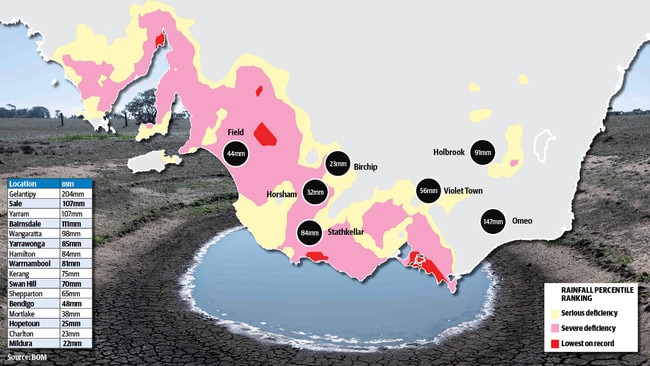
Al Commins, Omeo
“We have country north and south of the gap (Great Dividing Range) and the area north is doing it tough. There’s been less than 20mm of rain in the past 60 days. We’ve had to sell steers on better country further south, to make room for heifers that don’t have enough feed on our northern country. Rain this week without frosts will do some good.”
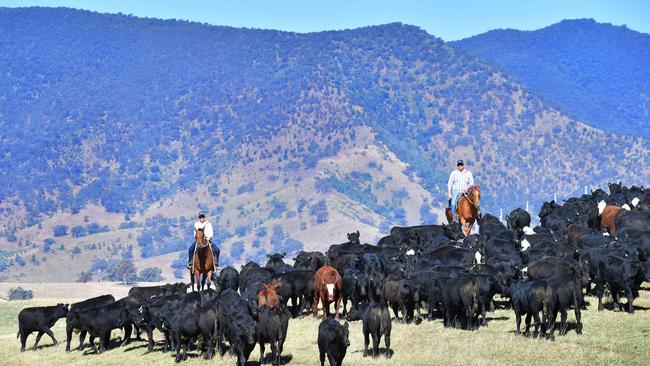
Simon Riddle, Violet Town
“We had 68mm in a week in March, which germinated clover and grasses, but less than 25mm since, and paddocks locked up for lambing after the rain have died off. We are supplementary feeding the ewes three times but that is creating difficulties including mismothering. There are financial factors like buying in more grain at elevated prices, physical factors like long hours to feed stock and mental factors including worrying about sourcing feed, and how much you will need. Even rain now will not do much for the pastures for a while due to the temperature dropping, and frosts starting.”
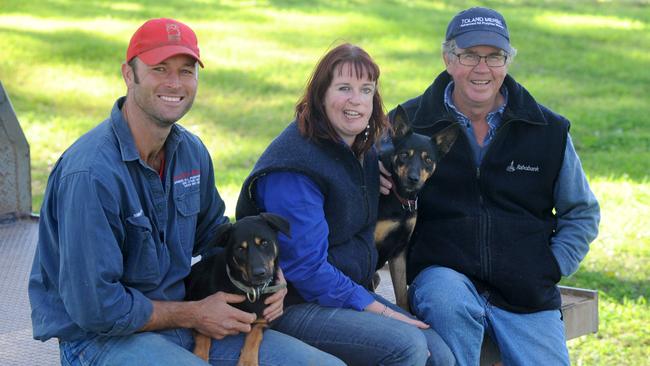
Stephen Parker, Holbrook, NSW
“It’s the second low rainfall year in a row. We’ve used all our hay, two years supply, and buying maize straw at the moment to keep our 700 cows going. There was 47mm of rain a couple of weeks ago but it hasn’t grown enough for the cattle to get a mouthful. We will have a green drought this winter. I am sowing oats now in the hope we get rain this week - it is late but it is worth trying.”
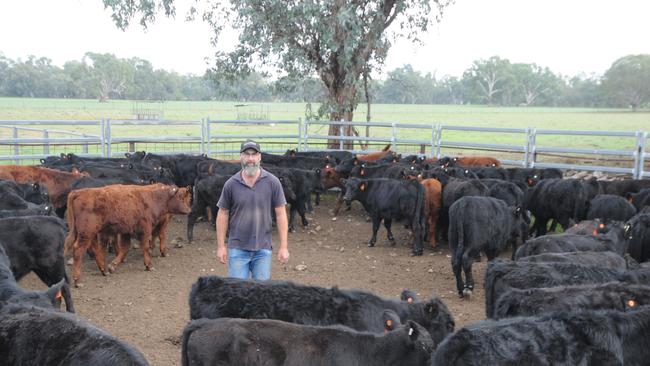
Tim McClelland, Birchip
“There was 20-120mm last November, and those who stored soil moisture will be OK. There are some crops up on the lighter, sandy soils. We’ve planted all our crop and now waiting for the rain. It’s still early enough and if we get the rain this weekend, it will be great but not a moment too soon. We didn’t have a great break last year either. If we get rain and can get the soil moisture to join up, we should be OK.”
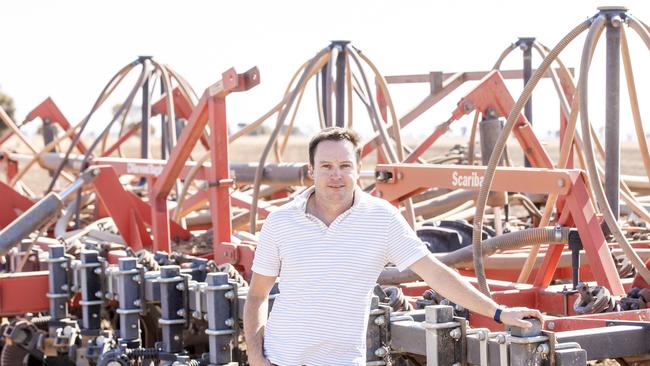
Horsham AWN agent Wayne Driscoll
“Water and fodder are the most pressing issues, and there has been a huge amount of sheep sold to processors in the past two years. There is zero inquiry on store sheep.
Now on stock numbers a rough guess would be we are down 15-20 per cent. The positive is commodities are almost a historical high, and that gives people a bit of heart to stay in it and maintain feeding.”

Jason Schulz, farmer, Field, Upper South East South Australia
“We had 17mm of rain last week and while it doesn’t rain feed, it is promising with the forecast of rain for the weekend and further out - we haven’t had a spring since 2022. Everyone has done a tremendous job keeping stock in good condition, feeding hand-to-mouth. We are now considering early weaning so our pastures can grow - there is no roughage available from Queensland to the west coast of SA. This drought started as a financial drought when lamb prices collapsed in 2023. Financial implications of the drought are having an impact on all businesses and on the townships as well. I am concerned about mental health in the community. When I look at my livestock that is one thing I can control, and I am proud of (the condition they have been kept in).”
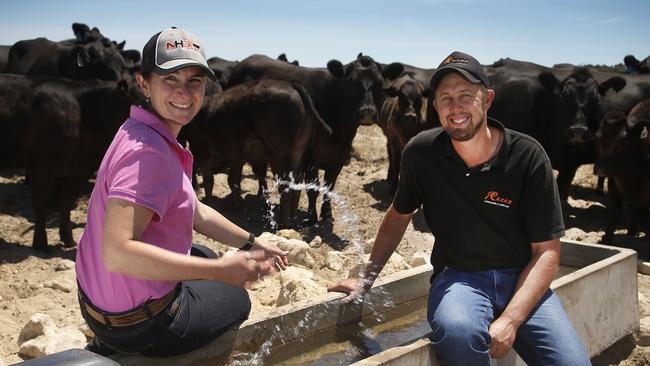
Kathryn Robertson, farmer and vet, Strathkellar
“It is very dry, we thought we just needed to get through last year and we are now struggling to get through this year - so when you don’t think it can get any worse, it can. Now, this year, not only have we not had an autumn break, (many farms) have empty dams. Personally, we have bore water, have dry sown crops, and are now lambing onto very little feed. The lessons of last year we have put in place this year. The mood in the farm community is very low, it is a tough slog, people are spending huge hours feeding. If we do get rain this week and weather stays mild we will get some grass growth, not as much as an autumn break but any rain would be welcome.”





